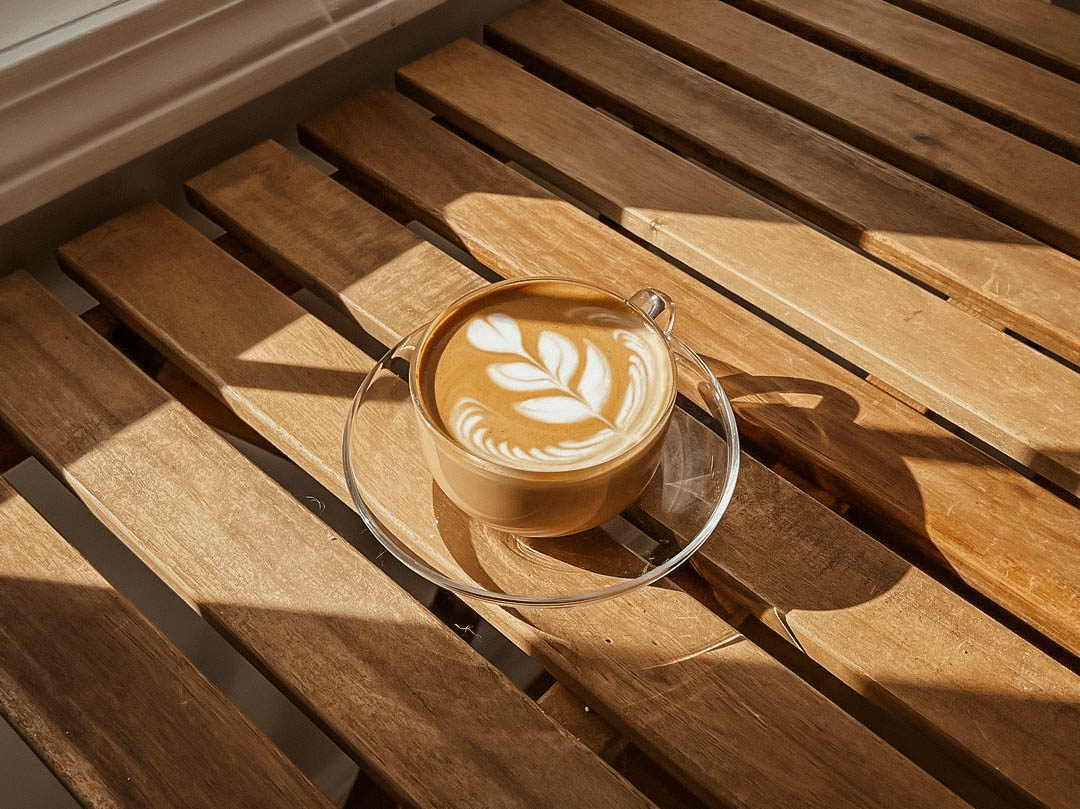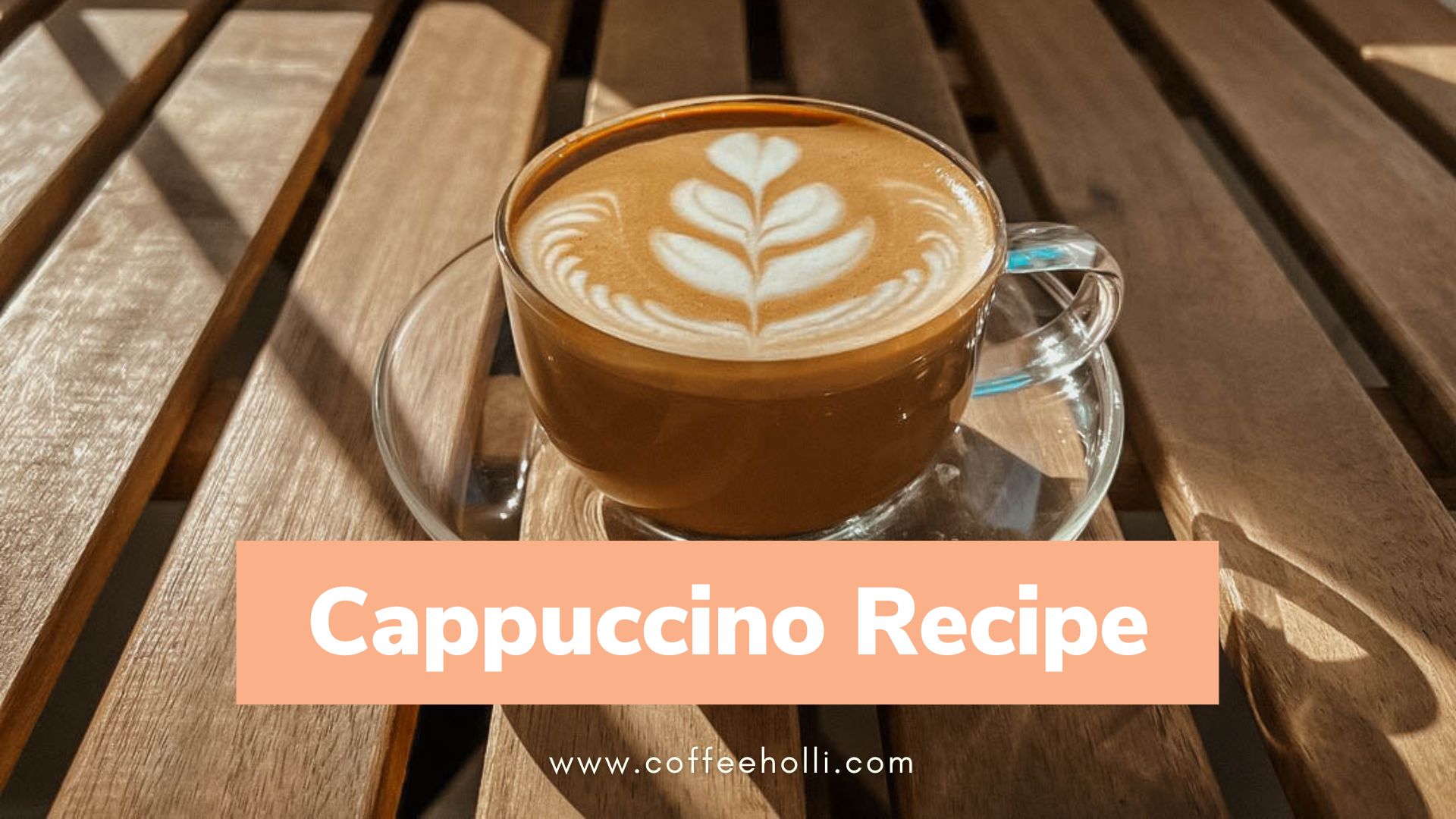Think of it:
Italy is regarded as the coffee capital of the world and Italian as the international lingo of coffee.
It’s because Italians invented the espresso coffee making method. That’s also why most espresso-based drinks have Italian names.
Think of macchiato, latte, mocha, americano, and cappuccino, which is our focus today.
In this article, I will take you through how to make a perfect cup of cappuccino at home, but before that, let’s define cappuccino and its history.
So, what’s, is a cappuccino?
Cappuccino is the second most popular coffee drink after espresso in Italy. It contains an equal amount of espresso, steamed milk and foam. Tastewise, this milky and frothy beverage is mildly sweet and a little bitter.
You may be wondering:
What does the name cappuccino mean? Cappuccino name was inspired by Capuchin Monks who wore brown robes called cappucios that look similar to espresso mixed with frothed milk.
And you know what?
Table of Contents
Cappuccino Trivia – Cappuccino Fun Facts
- Cappuccino is native to the Italians.
- Cappuccino isn’t taken later than 11 am in Italy.
- Cappuccino is one of the more than 20 espresso-based coffee drinks
- In the US, Nov 8th is National Cappuccino Day.
- Traditionally, cappuccino is taken together with croissant
- The largest cappuccino was made in 2013 by 33 baristas. It was 4250 litres.
- The word cappuccino was derived from the word “cappuccio” a brown hood worn by Capuchin friars.
- 1 cup of cappuccino contains between 70 and 120 calories.
- The standard cappuccino serving is 150ml – 180ml.
- The classic cappuccino should be served warm but boiling.
- The plural of cappuccino is cappuccini.
- Out of Italy, you will find several cappuccino recipes like dry, wet, iced, and flavoured cappuccinos, among others.
- Cappuccinos are flavoured by adding syrups, cinnamon, garlic, cocoa, or chocolate sauce.
- In Italian bars, cappuccino is served with water. You drink the water before and when drinking cappuccino to clean your palate.
- Italian cappuccinos are served in a standardised cup. There is no small, medium or Grande size.
- A coffee shop in Italy is called a bar
Learn How to Make Cappuccino Step-By-Step


Now:
Making a cup of cappuccino at home involves a couple of steps and a few tools
As I explained above:
Cappuccino is an espresso-based drink. So, the first step is to prepare the base, which is espresso. Here is what you will need, the ingredients, and the process to make espresso
Ingredients
- 2-ounce espresso shots
- 4-ounce fresh whole milk
- Toppings (optional) This can be cinnamon, chocolate sprinkles, cocoa powder etc.
What you will need
- Coffee beans (8g for one shot of espresso)
- Hot water
- Coffee grinder
- Milk jug
- Espresso machine (or an alternative method to prepare espresso)
- Portafilter if you are using an espresso machine
- Steam or milk frother (or an alternative tool to froth or steam milk)
- Thermometer
- Kitchen scale
Step 1. Prepare Espresso
Espresso is the base of all milk-based espresso coffee drinks.
Basically:
It is concentrated coffee brewed by passing hot water through fine coffee grounds.
a) To make espresso, the first thing to do is to grind the coffee beans.
Here you can use regular coffee beans. If you see coffee beans labelled “espresso beans” it means the roaster believes that the bean’s roasting profile is best for espresso.
Remember:
Coffee beans are best for espresso between 7 and 11 days after roasting. Also, make sure the beans were stored properly to ensure freshness.
Now:
Since espresso requires super fine ground coffee, you will need an espresso or burr grinder that can achieve such a grind setting.
Why so?
Since this method takes a very short time and the water is under pressure, the superfine ground size slows the water down and gives the water time to extract the 800+ components in coffee.
Something else:
Since the ground size is super fine, it’s easier for the water to extract the flavors and aromas in seconds.
Note:
There are several ways of making espresso. How you will make yours will depend on what you have.
The different methods of making espresso include:
- Espresso machine
- Manual espresso maker,
- Moka pot,
- Aeropress,
- French press.
Follow the manual during preparation.
Typically:
7 or 8 grams of coffee beans make 1 shot of espresso. If you want 3 shots, grind 24 grams of coffee beans and remember to adjust the other ingredients accordingly.
Step 2: Steam or Froth The Milk
Now:
The second most important component of a cup of cappuccino is steamed or frothed milk. This step involves steaming or frothing an equal amount of milk like the espresso you made above.
Reason?
Steaming or frothing milk improves the quality and consistency of the milk and enhances the texture of the cappuccino.
What’s the difference?
Frothing involves aerating milk to make froth or foam to give the milk texture. This makes the milk airy, foamy and fluffy.
How to froth milk
There are several ways of frothing milk, that include using:
- Coffee machine
- Milk frother
- French press
- Whisk
- Blender
- Baking mixer.
On the other hand:
Steamed milk involves heating milk and streaming it to produce microfoam. Because the milk is hot, the foam produced is sweeter, creamy and smooth. Unlike in frothing, where the bubbles are bigger, steaming produces smooth and finer foam.
The different ways of streaming milk include using a
- Steam wand
- Stovetop
- Microwave
- French press
The choice of whether you will steam or froth your milk will depend on how you like your cappuccino and the equipment you have.
Step 3: Make Cappuccino
With espresso ready and steamed or frothed milk ready, the remaining thing is to mix the three components together to make a cup of cappuccino.
Directions
- 1. Pre-heat your cappuccino cup. Fill the cup with hot water and let it sit for a few minutes then pour out the water. This will keep your cappuccino warmer longer.
- 2. Pour either 1 shot or 2 shots of espresso into the cup.
- 3. When the steamed milk is still in the pitcher or cup, gently tap the cup onto the counter so that the large bubbles can pop and leave only smooth microfoam bubbles.
- 4. Pour an equal amount of milk into the espresso.
- 5. Pour an equal amount of foam on top. You can use a spoon to scoop the foam.
- 6. Add your preferred toppings (optional)
Enjoy your cup of cappuccino.
Conclusion
It’s that simple.
Making a cup of cappuccino takes a few steps. As long as you know how to make espresso and foam milk, you are good to go. While the easiest way to cappuccino is using an espresso machine, If you don’t have an espresso machine, there are several methods ways to make espresso and form milk.
Frequently Asked Questions on How To Make Cappuccino
Making cappuccino at home is easy. Start by making espresso using an espresso machine, Moka pot, Aeropress or French press method. Then froth or steam an equal amount of milk to give the milk texture. Lastly, put the espresso in a cup, add an equal amount of milk and finally add the foam on top. If you so wish, you can add your favorite toppings on top.
If you want to make your cappuccino look pretty, you can add latte art on top if you know how to do it. Another way would be adding your favorite toppings on top.
While both cappuccino and latte are espresso-based coffee drinks made of espresso, frothed milk and foam, the amount for each differs. Cappuccino is made of ⅓ espresso, ⅓ steamed milk and ⅓ foam, while latte is made of ⅓ espresso, ⅔ steamed milk and a thin layer of foam (1 cm)
If you want to make coffee using a cappuccino machine, prepare espresso but don’t add milk.


